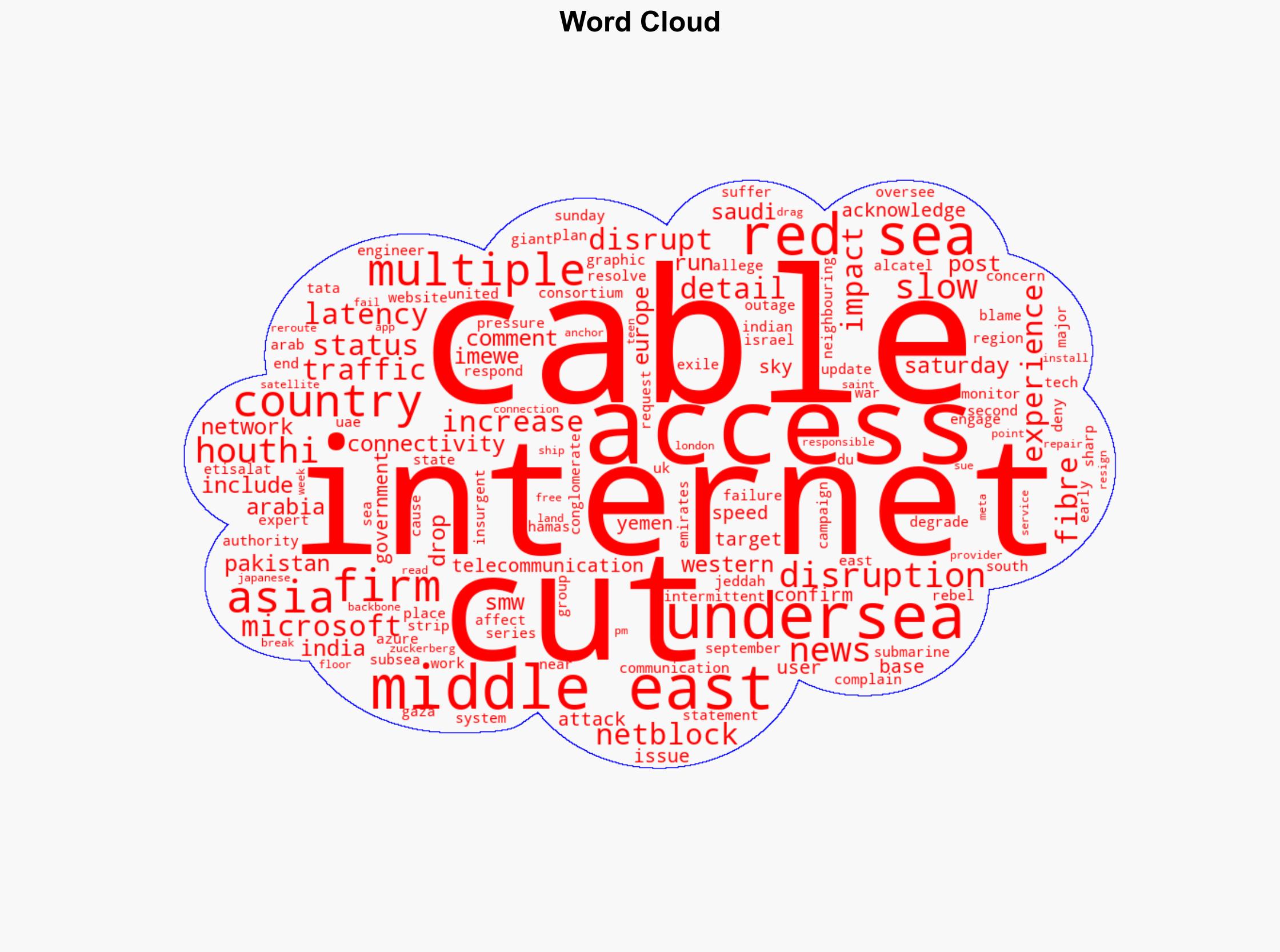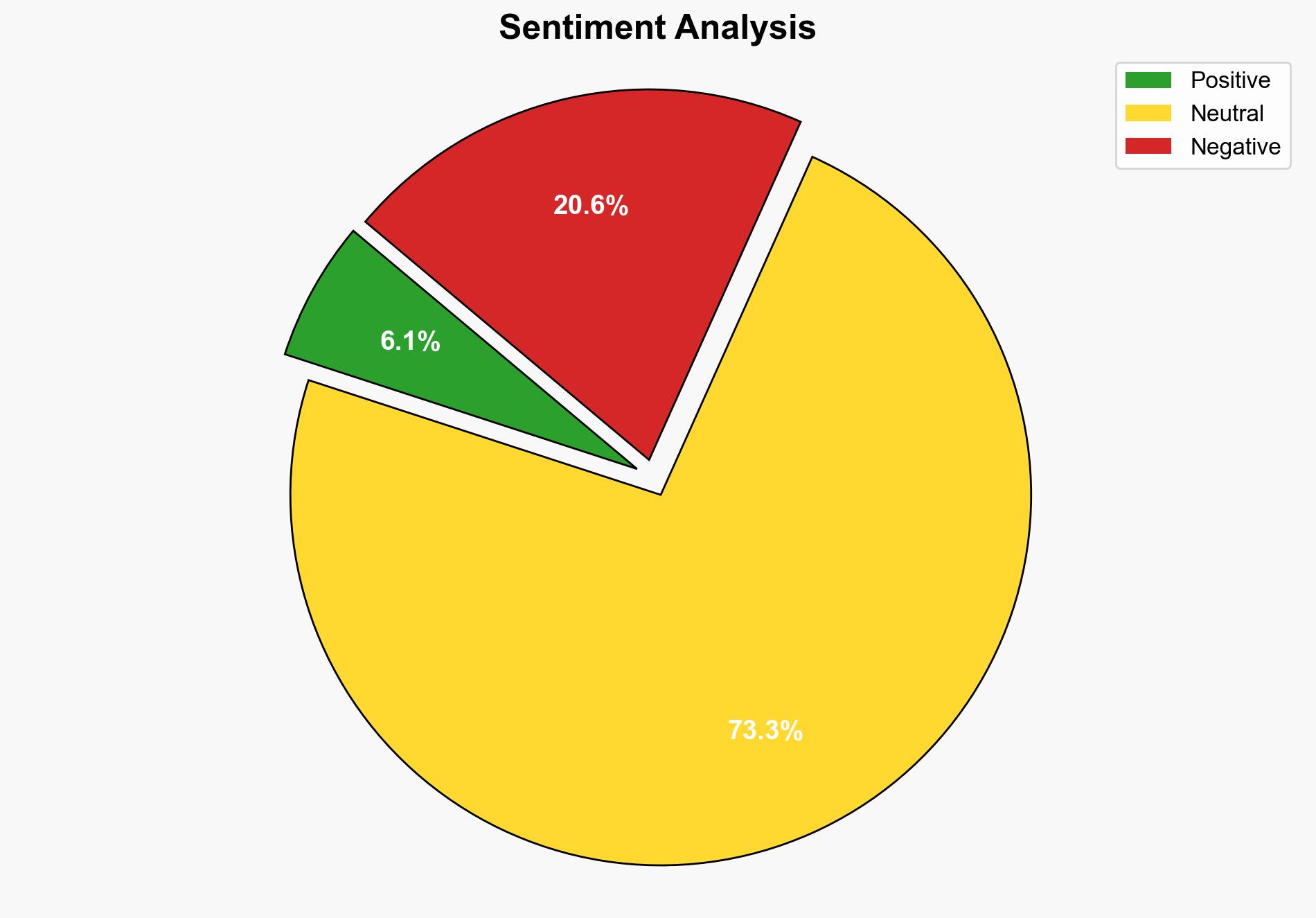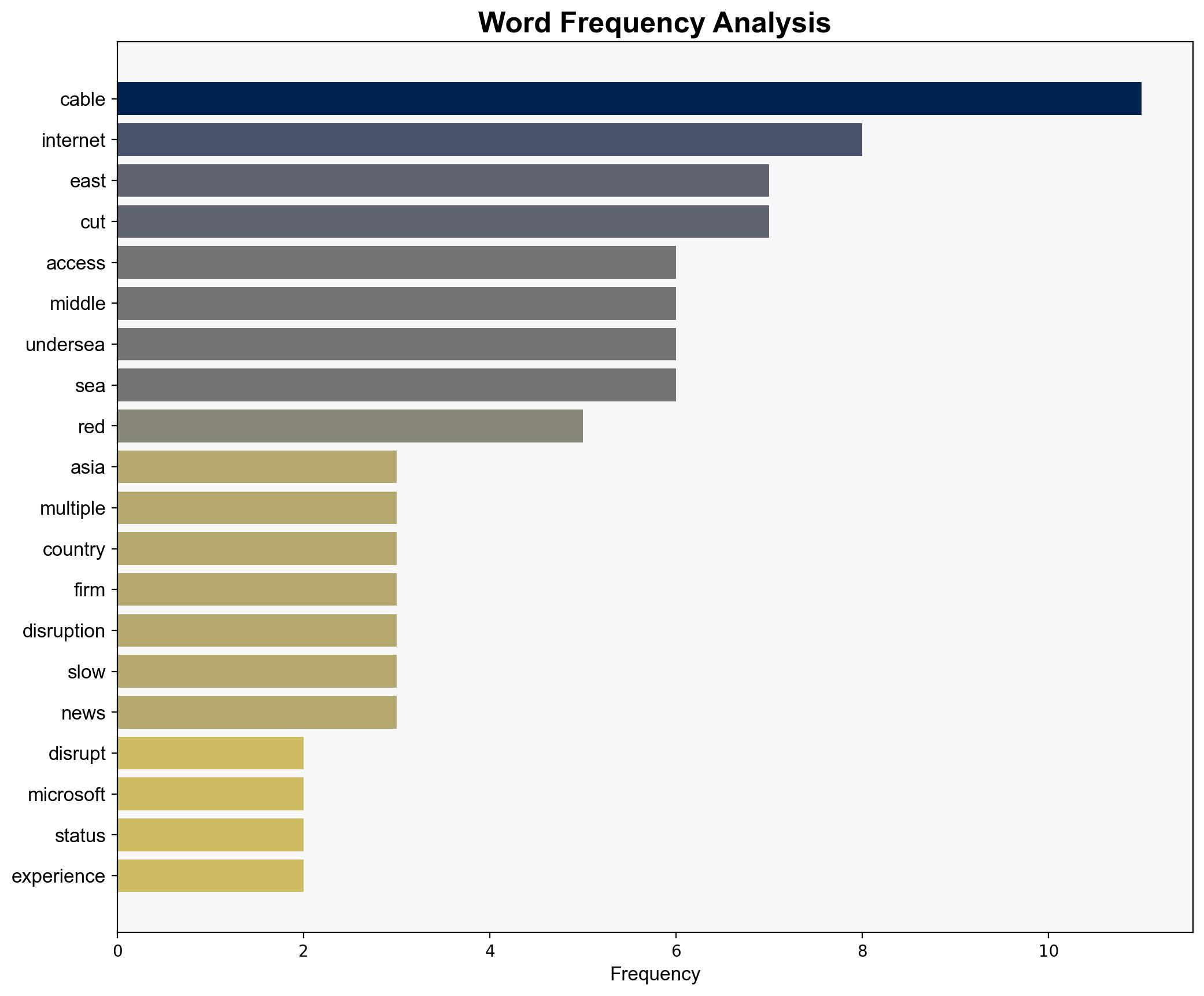Internet access in Middle East and Asia disrupted after ‘undersea cables cut’ – Sky.com
Published on: 2025-09-07
Intelligence Report: Internet access in Middle East and Asia disrupted after ‘undersea cables cut’ – Sky.com
1. BLUF (Bottom Line Up Front)
The disruption of internet access in the Middle East and Asia due to undersea cable cuts is most likely a result of deliberate sabotage, potentially by Houthi rebels, although accidental damage by maritime activity cannot be ruled out. The hypothesis of sabotage is better supported by the geopolitical context and previous threats. Confidence level: Moderate. Recommended action includes enhancing surveillance and protection of critical infrastructure and diplomatic engagement to reduce regional tensions.
2. Competing Hypotheses
Hypothesis 1: Deliberate Sabotage by Houthi Rebels
– The geopolitical context and previous threats by Houthi rebels suggest a targeted attack on undersea cables to disrupt regional communications and pressure adversaries.
Hypothesis 2: Accidental Damage from Maritime Activity
– The cables could have been accidentally damaged by maritime activities such as anchor drops, given the busy shipping lanes in the Red Sea.
Using ACH 2.0, the deliberate sabotage hypothesis is more consistent with the evidence of ongoing regional conflicts and specific threats made by the Houthis. The accidental damage hypothesis lacks direct evidence but remains plausible due to the nature of maritime operations.
3. Key Assumptions and Red Flags
– Assumption: Houthi rebels have the capability and intent to target undersea cables.
– Red Flag: Lack of direct evidence linking the Houthis to the incident.
– Assumption: Maritime activity in the Red Sea is sufficiently monitored to detect accidental damage.
– Red Flag: Inconsistent reporting from regional authorities and telecommunications firms.
4. Implications and Strategic Risks
The disruption of internet services poses significant economic risks and could escalate regional tensions. If sabotage is confirmed, it may lead to increased military and cyber responses, potentially destabilizing the region further. The incident highlights vulnerabilities in critical infrastructure that could be exploited by state or non-state actors.
5. Recommendations and Outlook
- Enhance monitoring and protection of undersea cables through international cooperation and technological investment.
- Engage in diplomatic efforts to de-escalate tensions in the region, particularly involving the Houthis and their adversaries.
- Scenario-Based Projections:
- Best Case: Rapid repair and increased security measures prevent future incidents.
- Worst Case: Continued sabotage leads to widespread regional instability and economic disruption.
- Most Likely: Temporary disruptions with gradual restoration of services and heightened security awareness.
6. Key Individuals and Entities
– Houthi rebels
– Microsoft Azure
– Tata Communications
– Alcatel Submarine Networks
– NetBlocks
7. Thematic Tags
national security threats, cybersecurity, counter-terrorism, regional focus





